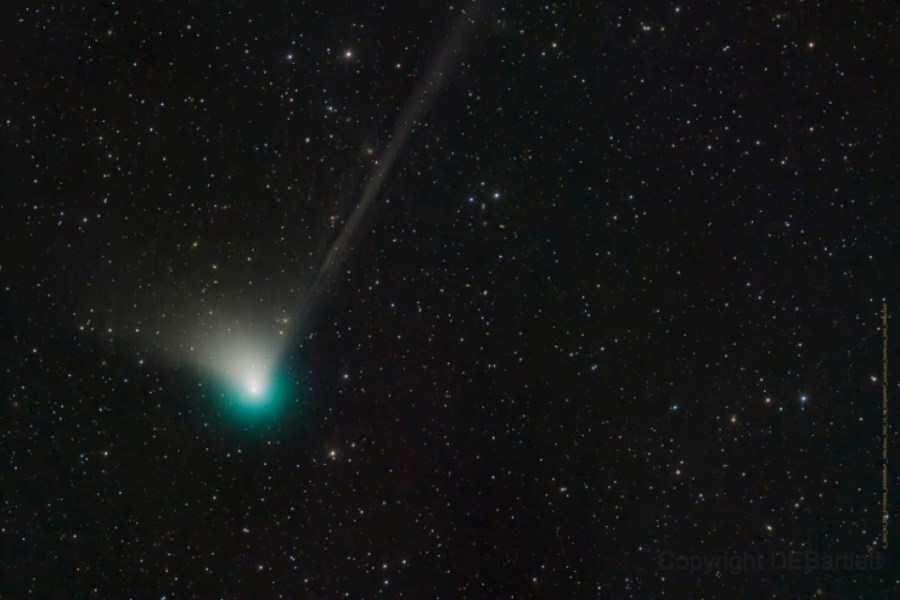When and where to see the elusive ‘green comet’
If you’ve never seen a green comet in the sky, this is your chance.
Comet C/2022 E3 (ZTF) will make its closest approach to Earth on Thursday night before it sails towards Mars.
The icy celestial object, discovered by astronomers Bryce Bolin and Frank Masci last year with the Zwicky Transient Facility telescope, will pass the Earth at a distance of 26 million miles (42 million kilometers), which is more than 100 times the distance from the Earth to the moon.

The comet originates from the outer solar system and takes roughly 50,000 years to orbit the sun just once, so this is the only time to see this particular comet for a while. It will appear as a faint green smudge visible in the sky near Polaris, the North star.
Viewers will need darker skies to really spot the comet, with those in the Northern Hemisphere having the best view. Best viewed with a telescope or binoculars, you can distinguish the comet from stars by the tail of dust and energized particles streaking behind it.
Comets get their colors by reflecting different hues of light based on their orbital positions and chemical compositions. C/2022 E3 (ZTF) appears green because the sunlight is interacting with carbon and cyanogen in the comet.
The best viewing times are after the moon has set, just past midnight for those in the Northern Hemisphere.
Comets are frozen hunks of gas and ice that are known to carry the building blocks of life and are leftover bits from the formation of the solar system. When comets heat up, the ice begins to sublimate or turn into a gas, which can give the comet a fuzzy appearance when looking at it through a telescope.
If you are unable to see the comet due to inclement weather or clouds — or perhaps you’re in the Southern Hemisphere — be sure to check out the Virtual Telescope Project, where there will be a livestream of its passage.
Copyright 2023 Nexstar Media Inc. All rights reserved. This material may not be published, broadcast, rewritten, or redistributed. Regular the hill posts








